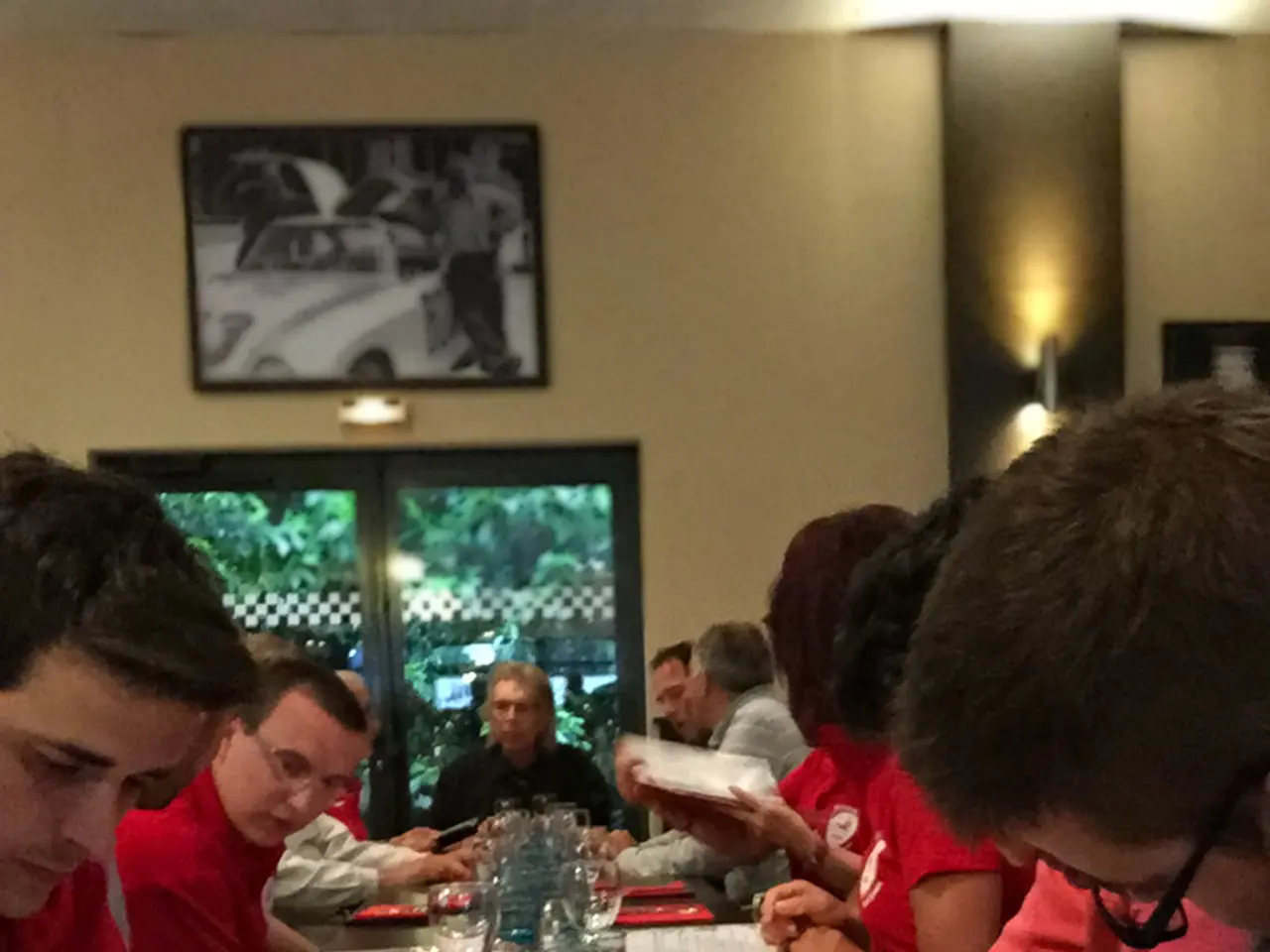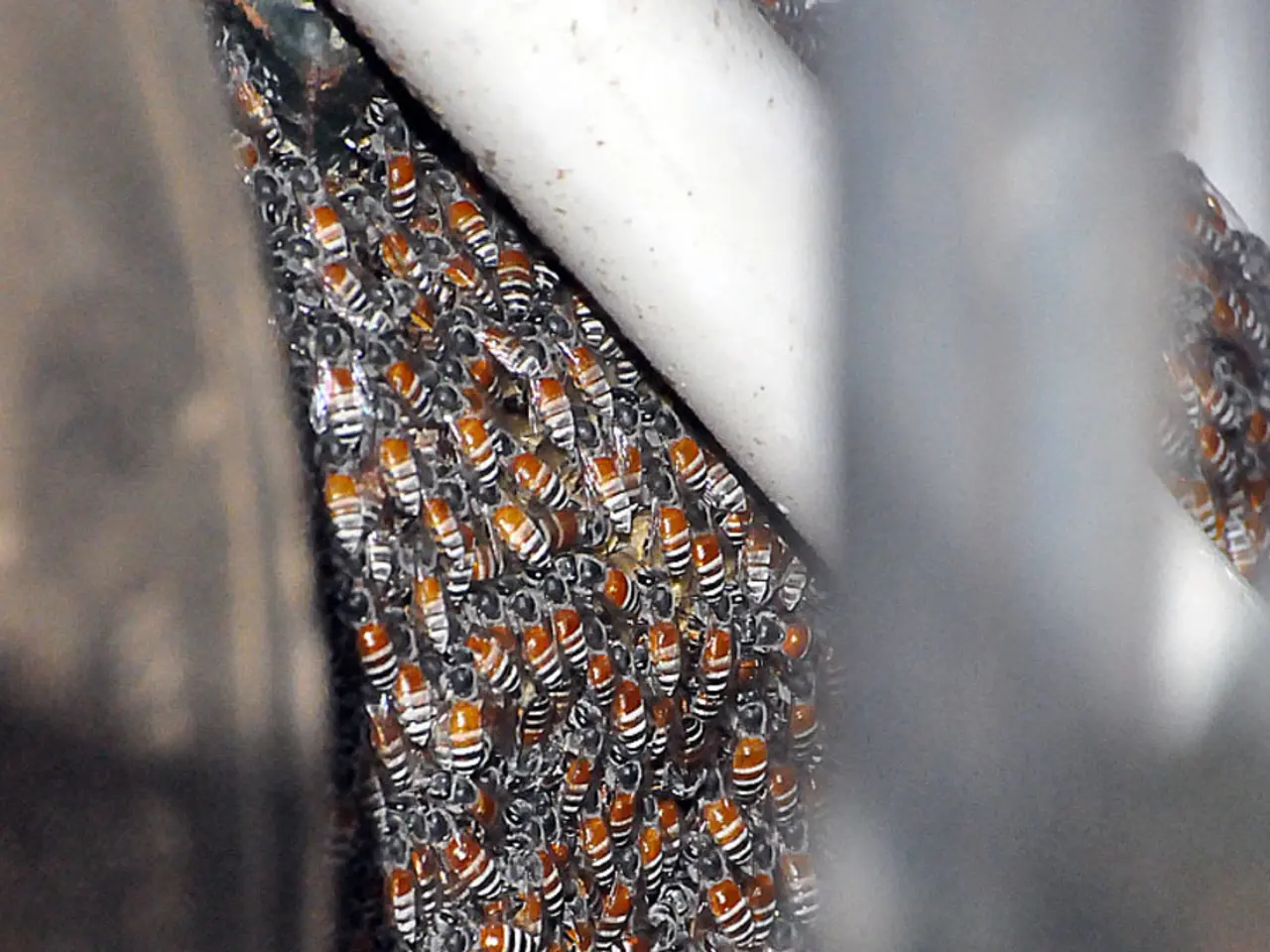Child Leukemia: Signs, Roots, Remedies, Prospects, and Further Insights
In the world of childhood illnesses, leukemia stands as a formidable opponent. Its symptoms, such as coughing, rashes, weight and appetite loss, headaches, extreme fatigue, difficulty breathing, and other common ailments, can make it difficult to identify at first glance [1].
When leukemia is suspected, a series of diagnostic tests are carried out. These may include blood tests, bone marrow aspiration, biopsy, lumbar puncture, lymph node biopsy, CT scans, MRI scans, and imaging tests [1].
Leukemia affects the production of red and white blood cells and platelets. The immature blood cells produced by the body do not function as they should, leading to a situation where the number of these immature cells overtakes the number of healthy ones [1].
Acute lymphoblastic leukemia (ALL) is the most common type of childhood leukemia, accounting for about 75% of cases [1]. Acute myelogenous leukemia (AML) follows closely, making up approximately 20% of childhood leukemia cases [1]. Rarer forms, such as Juvenile myelomonocytic leukemia (JMML), account for about 1-2% of cases [1].
The treatment for childhood leukemia can be intense and may consist of chemotherapy, targeted drugs, immunotherapy, stem cell transplant, radiation, and surgery [1]. While these treatments have improved the survival rates significantly, they come with their own set of challenges.
One such challenge is the long-term psychological effects on both the child patients and their caregivers. Studies show that about 23.3% of children with ALL exhibit significant psychopathology during treatment, with higher-risk disease categories leading to more intensive chemotherapy and steroids linked to adverse psychological reactions [1]. Even years after treatment, survivors may continue to experience cancer-related anxiety, PTSD, and social adaptation challenges [2][3].
For caregivers, especially parents, the psychological impact is profound and enduring. They often face high levels of anxiety, depression, PTSD, burnout, and emotional distress related to the child’s illness and its demands [2][4]. Research shows a strong correlation between caregiver mental health and the psychological well-being and treatment adherence of the child; caregiver stress can trigger cognitive and emotional problems in the patient and reduce compliance with treatment [2].
To address these complex emotional and psychological needs, regular psychological screening and support for both patients and caregivers during and after treatment is recommended [1][2][5]. Additional support strategies include social support enhancement and problem-solving skills training for caregivers [2].
Integrating comprehensive, ongoing psychosocial care within pediatric oncology settings is crucial to improve long-term outcomes for childhood leukemia survivors and their families [5].
Despite the challenges, it's important to remember that advancements in treatment have led to improved survival rates. The 5-year survival rate for children with ALL is 90%, and for children with AML is 65-70% [1]. Most children with leukemia have no known risk factors, and there is no way to prevent leukemia from developing [1].
However, certain factors can increase a child's risk of leukemia, including genetic conditions like Down syndrome and environmental factors like exposure to radiation and certain chemicals [1].
Childhood leukemia is the most common form of cancer in children under the age of 15 in the United States [1]. For those affected, resources like the Leukemia and Lymphoma Society, Cancer Care, Children with Cancer UK, Great Ormond Street Children's Hospital, CLIC Sargent, Childhood Cancer Parents Alliance (CCPA), and Macmillan, offer support and guidance throughout the journey [1].
[1] Long-term psychological effects of childhood leukemia on patients and caregivers. (n.d.). Retrieved from https://www.ncbi.nlm.nih.gov/pmc/articles/PMC7840243/ [2] Psychological support for children with cancer and their families. (2019). Retrieved from https://www.ncbi.nlm.nih.gov/pmc/articles/PMC6692123/ [3] Psychosocial issues in childhood cancer. (2019). Retrieved from https://www.ncbi.nlm.nih.gov/books/NBK532968/ [4] Caregiver burden and distress in childhood cancer. (2019). Retrieved from https://www.ncbi.nlm.nih.gov/pmc/articles/PMC6844578/ [5] Integrating comprehensive psychosocial care within pediatric oncology settings. (2019). Retrieved from https://www.ncbi.nlm.nih.gov/pmc/articles/PMC6908556/
- In the quest for further improvements in the treatment of childhood leukemia, Pfizer, a leading pharmaceutical company, has been conducting extensive research focusing on new drug therapies that could potentially alleviate the mental health issues associated with this disease in patients and their caregivers.
- To enhance the overall health and wellness of childhood leukemia survivors and their families, it is essential to not only focus on the medical-conditions related to the disease but also to adequately address the science behind the psychological effects and mental-health challenges brought about by the illness.
- As the five-year survival rate for children with leukemia continues to improve, it becomes increasingly important to ensure that these survivors receive comprehensive treatment, including management of their medical-conditions, cancer, and the potential long-term psychological effects, for a holistic approach to health and well-being.




